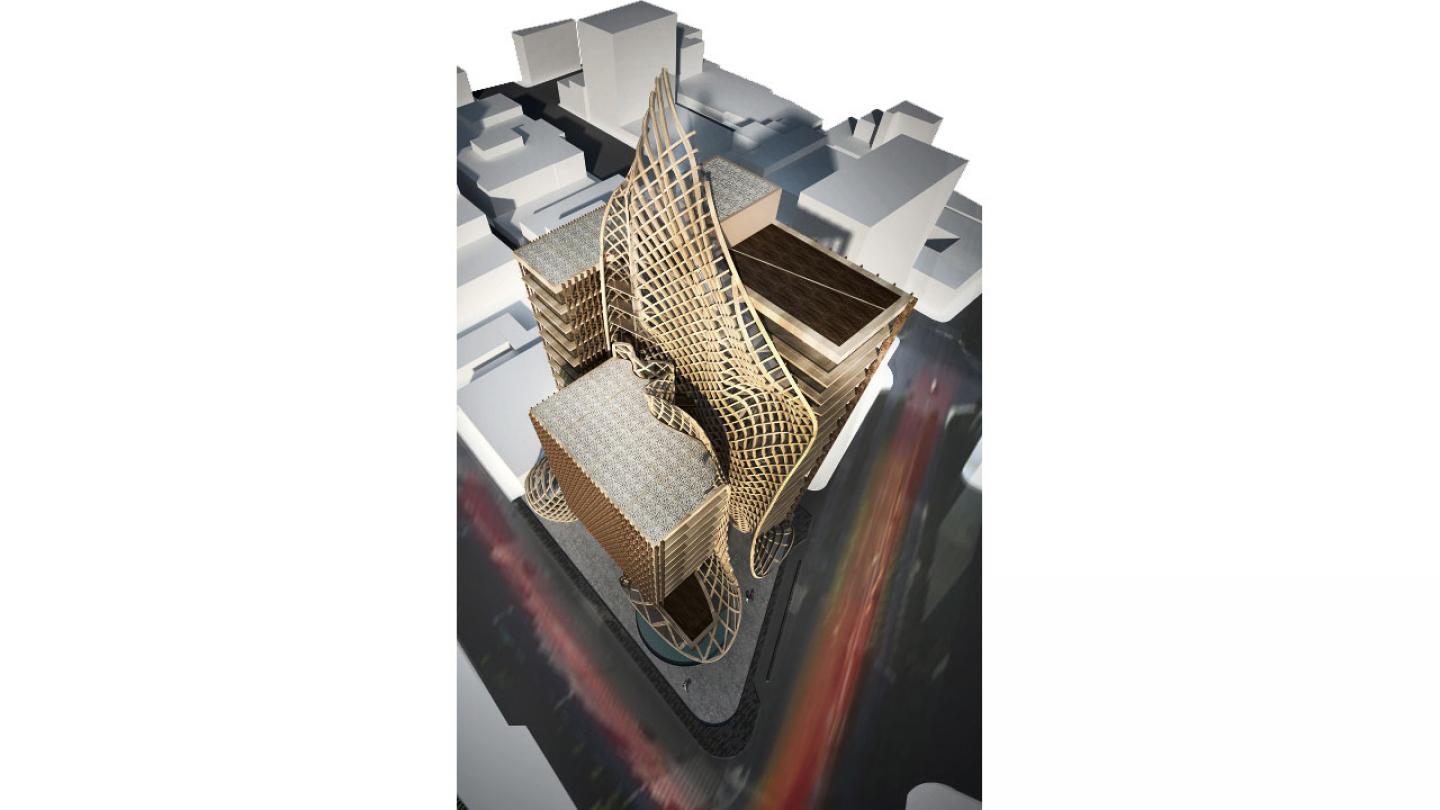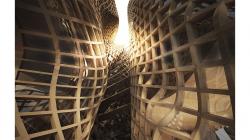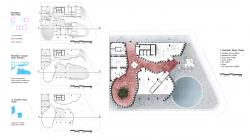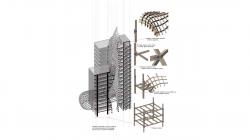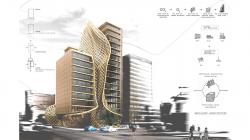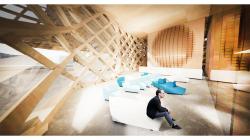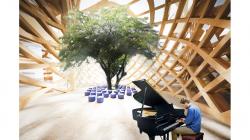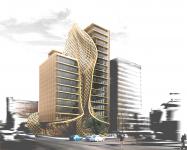Wood is a concept that mimics the natural growth behaviour of plants. The story of the structure begins where a tree is planted. When a tree becomes material for various structural purposes, the materials become a building and then the building decays with time and diminishes back into nature, creating an organism like lifecycle which exists without resisting and working along with major forces within earth’s natural ecosystem (more resilient architecture).
Boom, acts as seed that spontaneously impregnates in nature. It sprouts to create symbiotic relationships between architectural culture and industry. When the system grows enough to create a cultural breakthrough, it starts to sprawl though the urban infrastructure, accumulating a larger entity within the urban context by creating civic centers, public buildings and other enclosure of urban typologies. This sprouting free envelope that wraps the three masses of the building establihes negotiated areas between public and private spaces. The ground area where everyone can access is an urban station providing people places to work, take a minute to socialize and most importantly find opportunities to experience a such building. This building is responsible for standing as an archetype within the urban context to exhibit itself to the public. With a goal of creating a social impact in time, the spaces created between the masses (courtyard) are open to access by public. The building, the walls, the columns, the beams and all the other structural elements constitute galleries of exhibition, functioning like a museum of wooden systems for architecture.
Mood is what this system adds to architecture in terms of spatial quailities. It is the epitome of how humans relate themselves to architecture made primarily out of wood. A column or a beam is not a barely functional element anymore. They can be touched, can be sat on or even hugged. The very structure that holds this building standing possess mothernature’s fingerprint within its entire entity, giving the users a totally different feeling than what more convential systems of architecture would give.
2015
0000
Emre Engin, İbrahim Anıl Biçer, Mustafa Salih Yıkar, Akif Yağız Saraçlar
